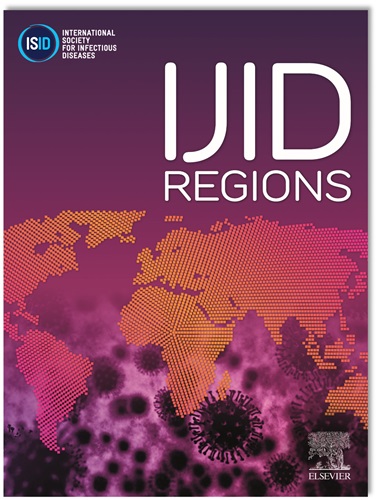Analysing Open-source Images to Assess Face Mask Usage for Epidemiological Studies
IF 4.8
2区 医学
Q1 INFECTIOUS DISEASES
引用次数: 0
Abstract
Background
Face masks are an available intervention for respiratory emerging infectious diseases. Research during the COVID-19 pandemic has sought to manually quantify mask use in mass gatherings and public settings. Open-source images of mass gatherings or other large events on news and social media contain valuable information about face mask usage. This study aims to develop and validate an Artificial Intelligence (AI) solution to automatically analyse open-source crowd photos for estimation of mask use.
Methods
Our AI solution includes four analysis stages: 1) detecting individual faces on a given image, 2) excluding unusable (blurry or occluded) face images, 3) classifying face images with or without a mask, and 4) identifying the indoor or outdoor environment. Multiple machine learning (ML) techniques were employed, such as a model named ResNet152-pretrained for the mask-related classifications at Stages 2 and 3 and Microsoft AI Computer Vision Service at Stage 4. To train the models, we collected open-source images using data-searching strategies similar to those developed for the AI-driven outbreak warning platform, EPIWATCH® (The Kirby Institute, Sydney, NSW, Australia)
Results
We finetuned those mask-related classification models using 25800 individual face images from 1871 open-source crowd images. We evaluated the face mask classification using images of mass gatherings. The face images were correctly classified for mask use in 88% of cases.
Discussion
We demonstrated the potential to classify open-source images to assess face mask use. Current results support our open-source analysis strategy with AI innovations for mask use estimation using open-source data. This is a novel epidemiological tool and further research is required to assess its validity in providing accurate assessments of mask wearing.
Conclusion
Analysing open-source images presents new opportunities to estimate mask use or other visual characteristics pertinent to public health and provide valuable insights into mandated mask-related health policies. AI-powered image analysis systems can help identify high-risk areas, track disease progression, and inform targeted interventions, ultimately contributing to more effective public health strategies and improved population health outcomes.
求助全文
约1分钟内获得全文
求助全文
来源期刊
CiteScore
18.90
自引率
2.40%
发文量
1020
审稿时长
30 days
期刊介绍:
International Journal of Infectious Diseases (IJID)
Publisher: International Society for Infectious Diseases
Publication Frequency: Monthly
Type: Peer-reviewed, Open Access
Scope:
Publishes original clinical and laboratory-based research.
Reports clinical trials, reviews, and some case reports.
Focuses on epidemiology, clinical diagnosis, treatment, and control of infectious diseases.
Emphasizes diseases common in under-resourced countries.

 求助内容:
求助内容: 应助结果提醒方式:
应助结果提醒方式:


